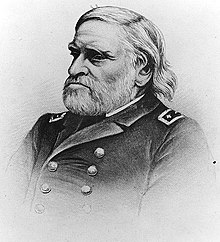Josiah Tattnall (politician)
Josiah Tattnall | |
|---|---|
| United States Senator from Georgia | |
| In office February 20, 1796 – March 3, 1799 | |
| Preceded by | George Walton |
| Succeeded by | Abraham Baldwin |
| 25th Governor of Georgia | |
| In office November 7, 1801 – November 4, 1802 | |
| Preceded by | David Emanuel |
| Succeeded by | John Milledge |
| Member of the Georgia House of Representatives | |
| In office 1795-1796 | |
| Personal details | |
| Born | c. 1762 Savannah, Georgia Province |
| Died | (aged 41)[1] Nassau, British West Indies |
| Political party | Democratic-Republican |
| Relatives | Harriet Tattnall (wife) Josiah Tattnall Sr. (father) Josiah Tattnall III (son) |
| Signature | |
Josiah Tattnall (c. 1762 – June 6, 1803)
Early life
Tattnall was born in 1762, to
Mullryne, who also built the third Tybee Lighthouse in 1773, established a small family graveyard on the grounds, which eventually formed the nucleus of the present-day Bonaventure Cemetery. Bonaventure was one of the largest structures in the colony of Georgia.[6]
Tattnall and his family left Georgia at the outbreak of the
Revolutionary War
Around 1782, the Tattnall family returned to Georgia. Josiah Tattnall joined the Continental Army under General Anthony Wayne, helping remove Savannah from British rule. After the war, Tattnall bought back a portion of Bonaventure from John Habersham and continued his interest in the military. He commanded the Georgia militia in 1787 and led troops against the Creek Indians in 1788 and 1793. He was captain of the Chatham Artillery, the oldest militia unit in Georgia, and later colonel of an infantry regiment. President George Washington nominated him for marshal of Georgia in 1794.[8] He was promoted to brigadier general shortly before his election as governor in 1801.
Political life
Tattnall served his state as a member of the
After serving in the U.S. Senate, Tattnall returned to Georgia and to his beloved Bonaventure. He was elected
Death and legacy

Tattnall was married to Harriet Fenwick, originally from Charleston, South Carolina. The couple had several children, but only three lived to adulthood. Their son, the third
Tattnall is buried in the Tattnall family plot (section E, lot 1),[13] alongside his wife, who preceded him in death by a few months,[1] at Bonaventure Cemetery.
Georgia's Tattnall County was named for him,[14] as was Savannah's Tattnall Street.[15]
References
- Specific
- ^ a b Georgia's Landmarks, Memorials and Legends, Lucian Lamar Knight (The Byrd Printing Company, 1914)
- ^ ISBN 0-8108-5036-2.
- ^ ISBN 978-0-691-13773-5.
- ^ Smith, p. 343.
- ^ a b Smith, p. 344.
- ISBN 9780820335674.
- ^ Jones, Charles C. (1878). The life and services of Commodore Josiah Tattnall (PDF). Savannah: Morning News Steam Printing House. p. 2.
- ^ Washington, George. "From George Washington to the United States Senate, 5 March 1794". Founders Online. National Archives. Retrieved October 16, 2020.
- ^ Fair, John D. (2015). "Governor David B. Mitchell and the "Black Birds" Slave Smuggling Scandal". Georgia Historical Quarterly. 99 (4).
- ISBN 0820304271.
- ^ Tattnall, Josiah. "To Thomas Jefferson from Josiah Tattnall Jr., 20 July 1802". Founders Online. National Archives. Retrieved October 16, 2020.
- ^ King, Thomas. "[Letter] 1802 June 12, St. Mary's, [Georgia to] Josiah Tattnall, Governor [of Georgia], Savannah / Tho[ma]s King . . . [et al.]". Southeastern Native American Documents, 1730-1842. Telamon Cuyler, Hargrett Rare Book and Manuscript Library, The University of Georgia Libraries, presented in the Digital Library of Georgia. Retrieved October 16, 2020.
- ^ Bonaventure Section E - SavannahGA.gov.
- ISBN 0-915430-00-2.
- ^ Cope, Tony (2016). It's Not That Lincoln. The Abercorn Press.
- General
- Smith, Gordon Burns, History of the Georgia Militia, 1783-1861, Volume One, Campaigns and Generals, Milledgeville: Boyd Publishing, 2000. ASIN:B003L1PRKI.
External links
Brown, Russell K. "Josiah Tattnall (ca. 1764-1803)". New Georgia Encyclopedia. Retrieved from http://www.georgiaencyclopedia.org/articles/government-politics/josiah-tattnall-ca-1764-1803.
- United States Congress. "Josiah Tattnall (id: T000052)". Biographical Directory of the United States Congress. Retrieved on 2009-05-23
- "Josiah Tattnall". Find a Grave. Retrieved May 23, 2009.


